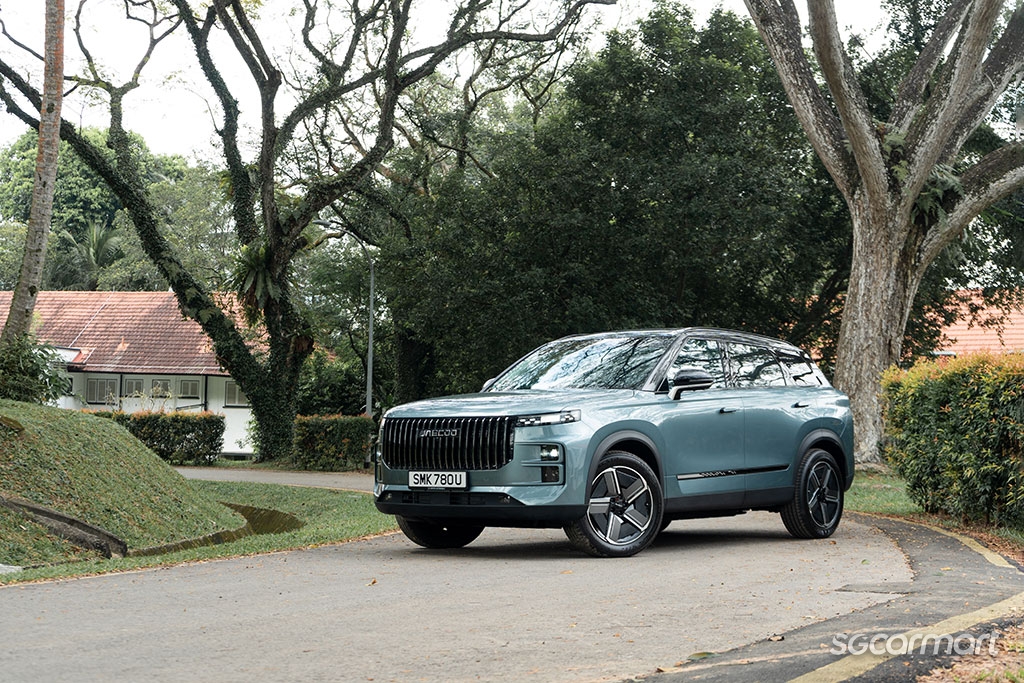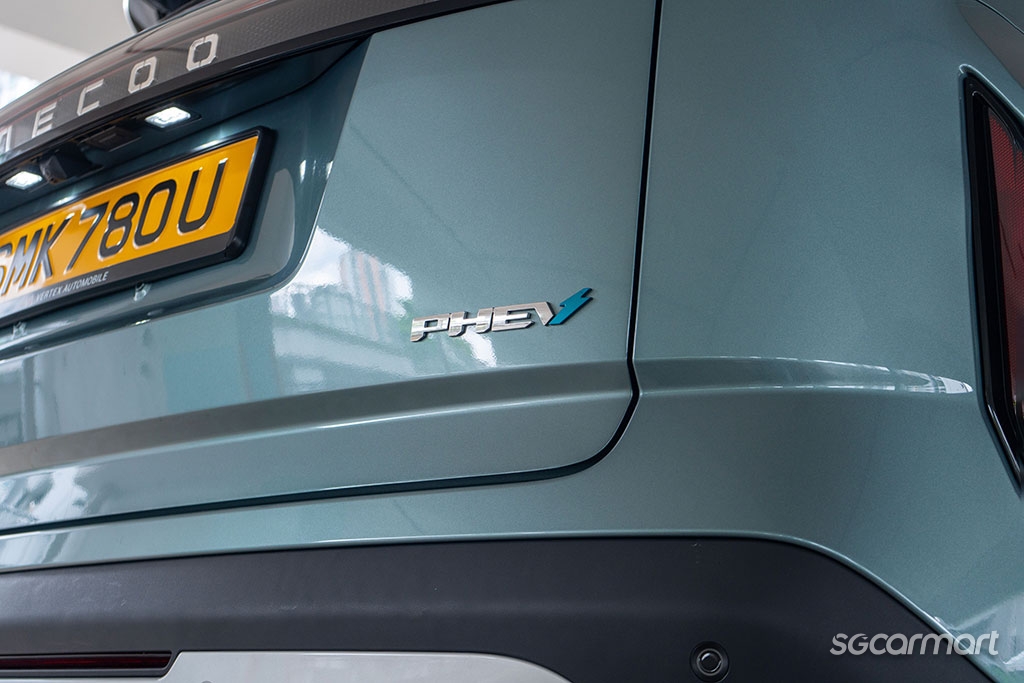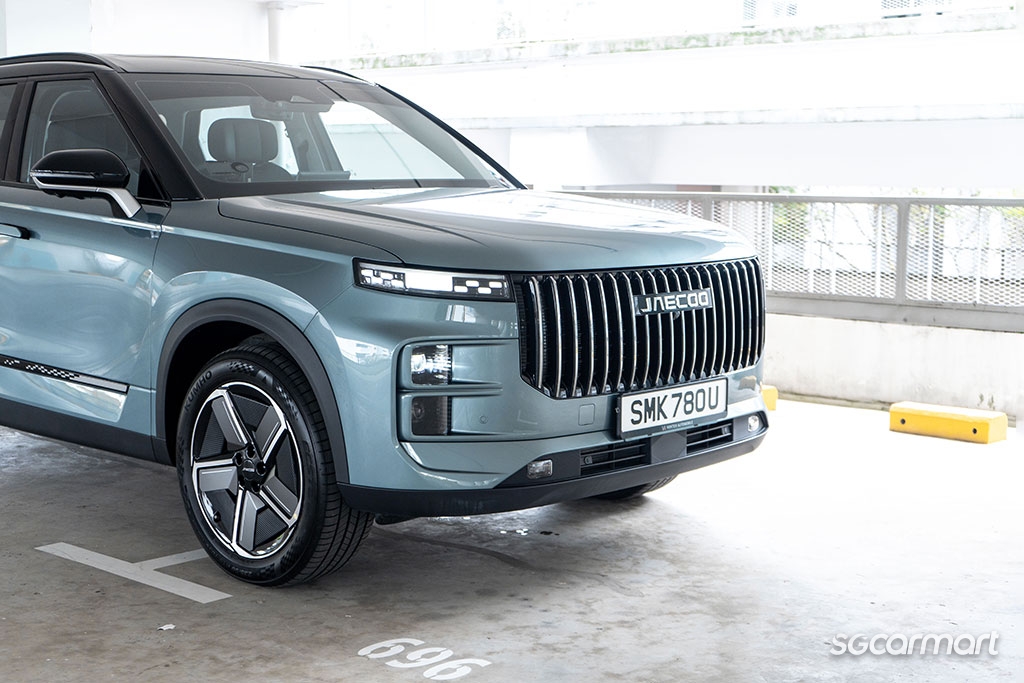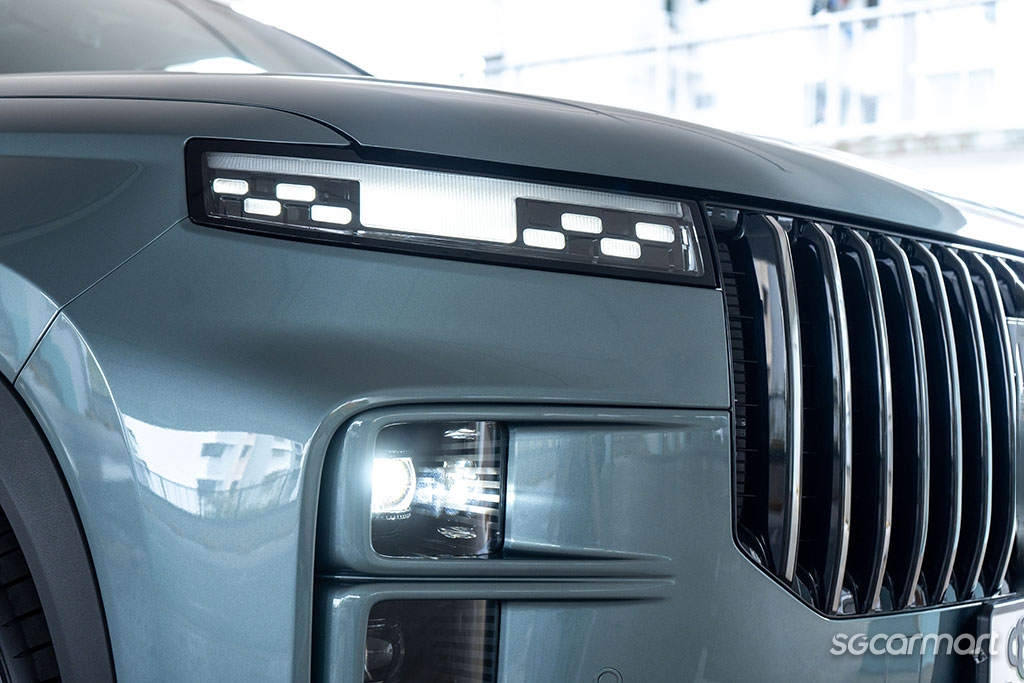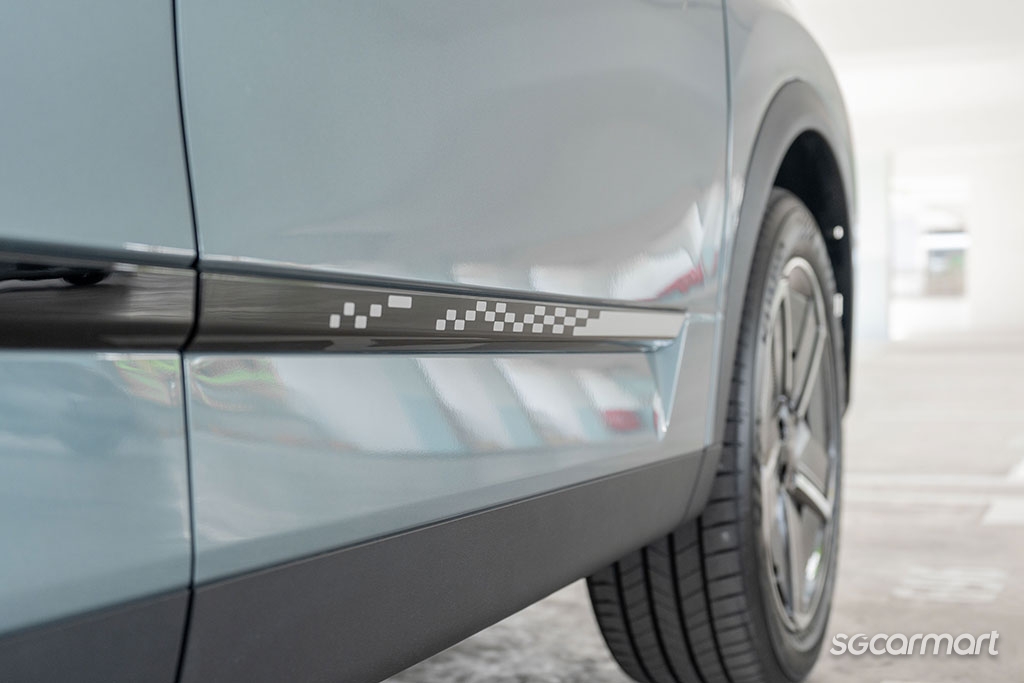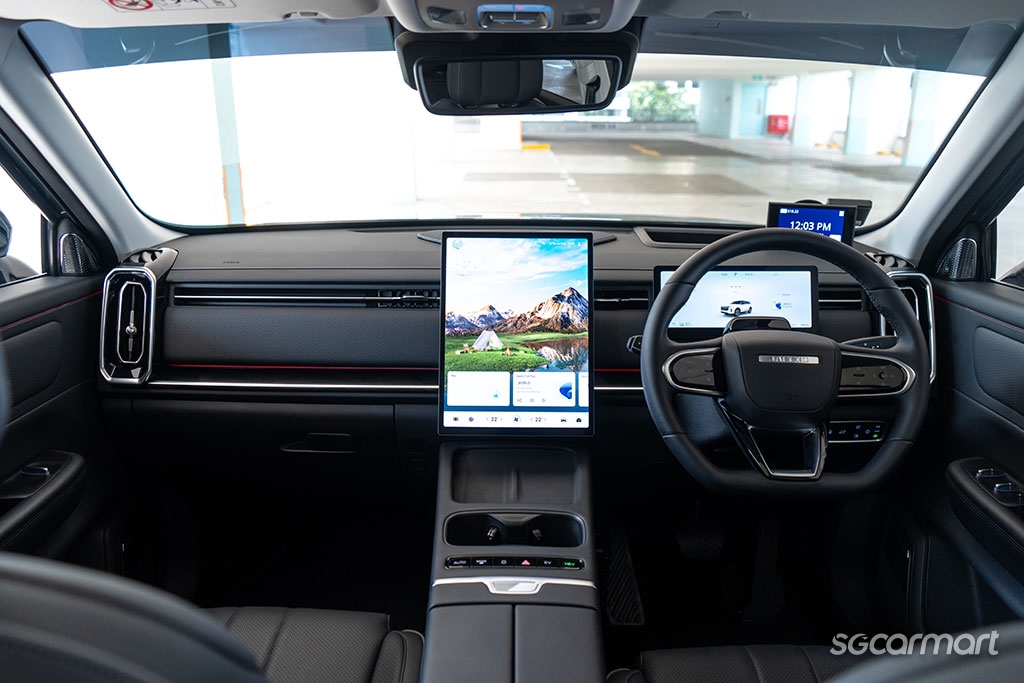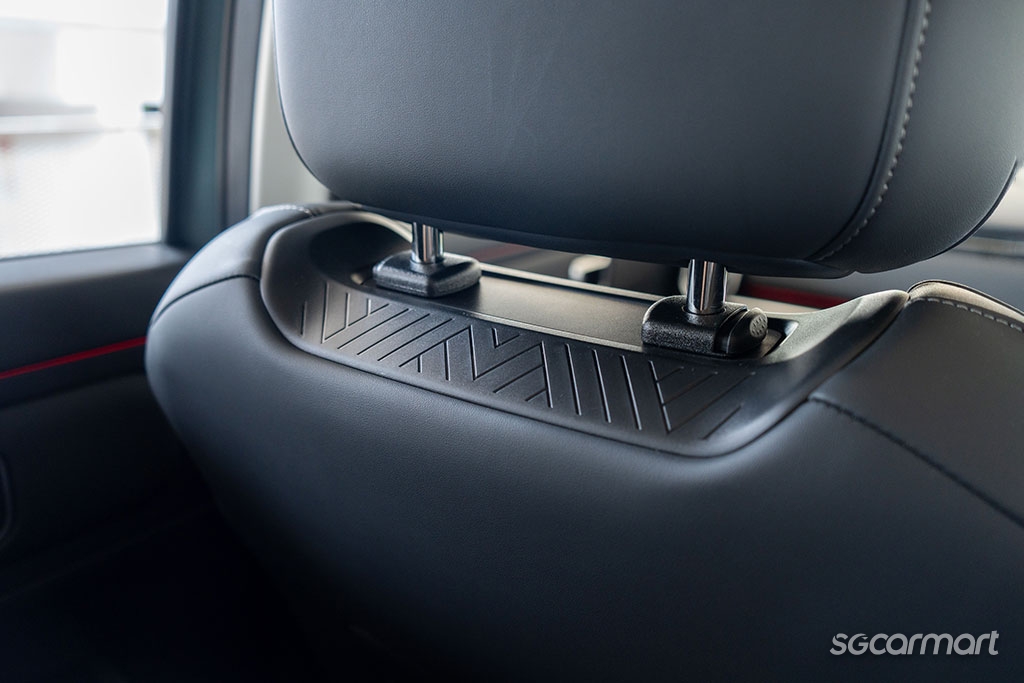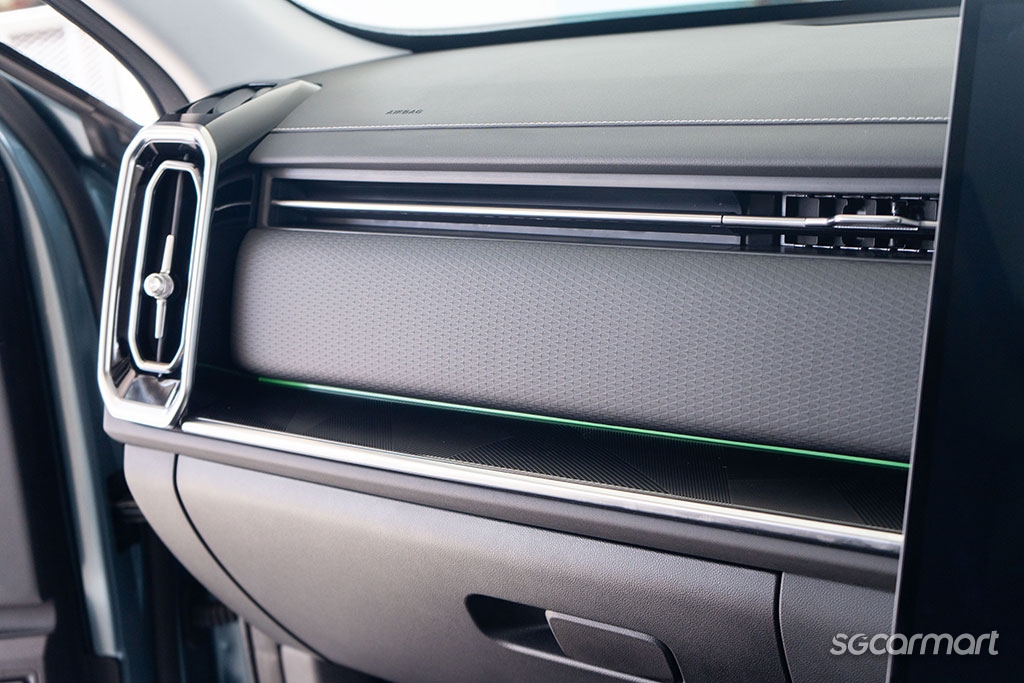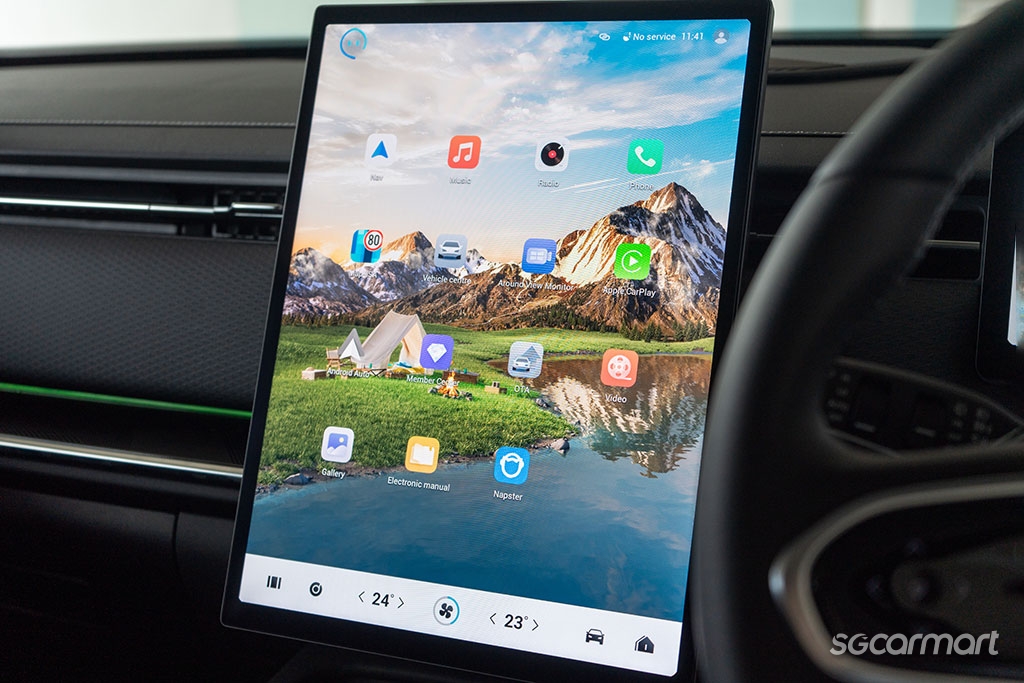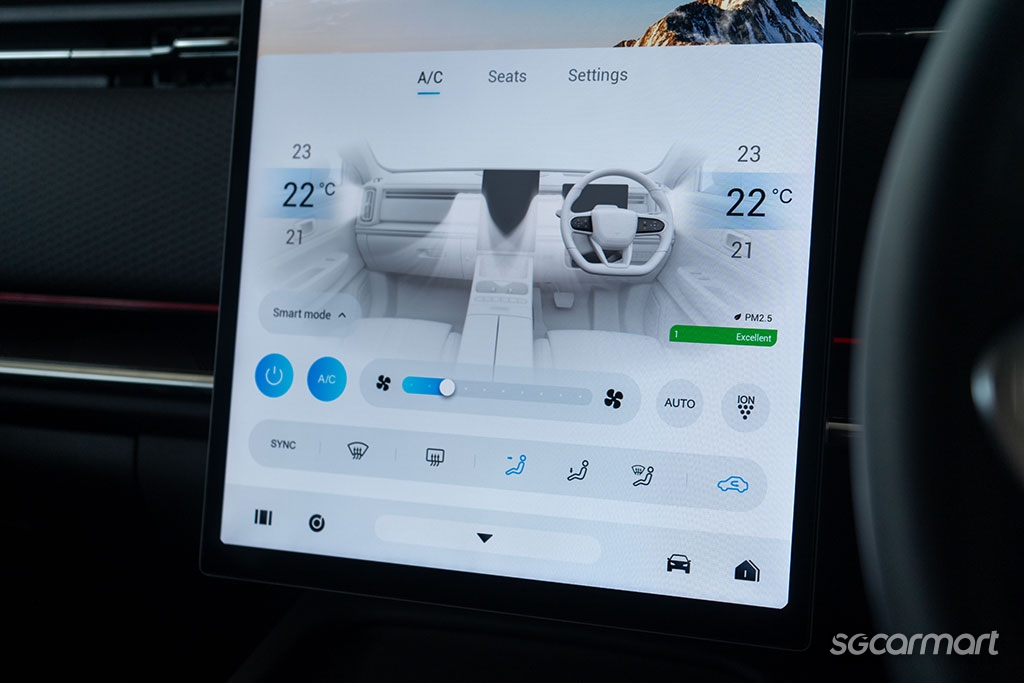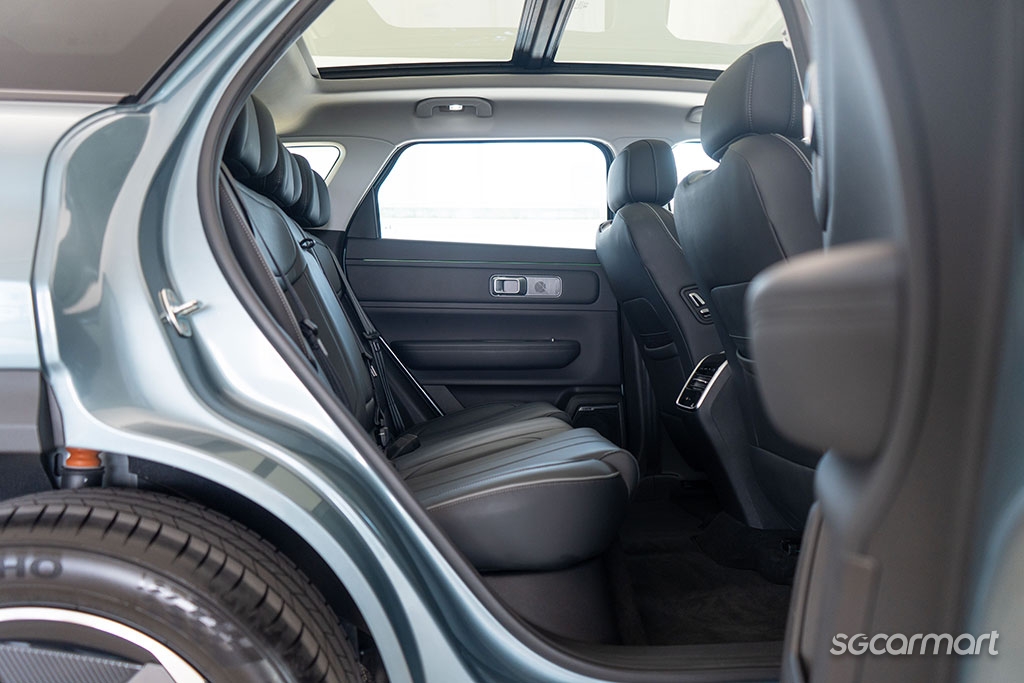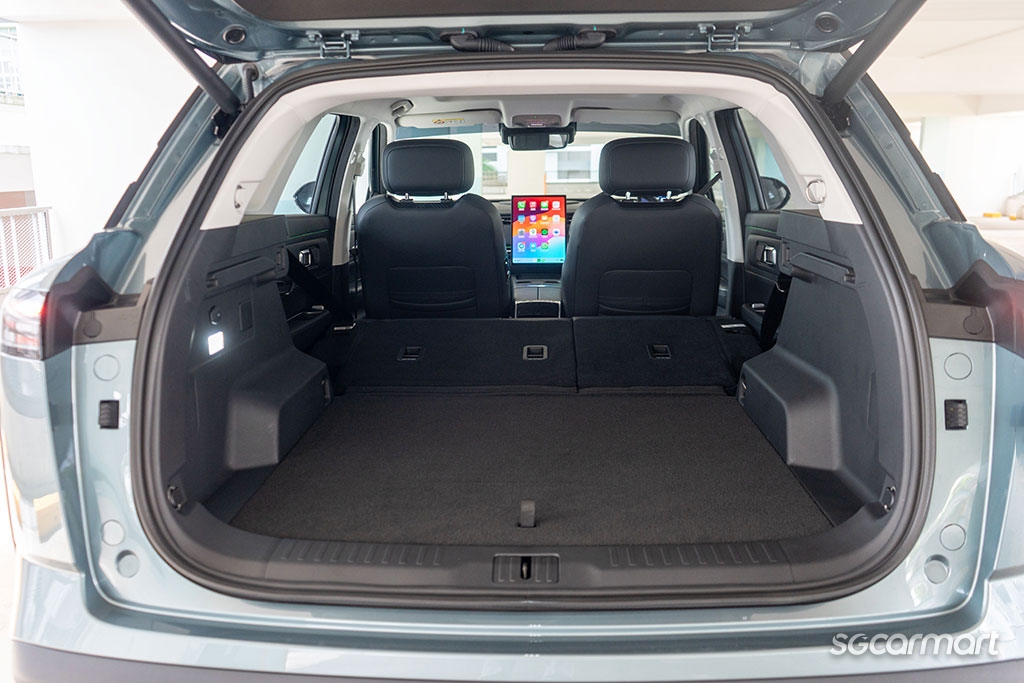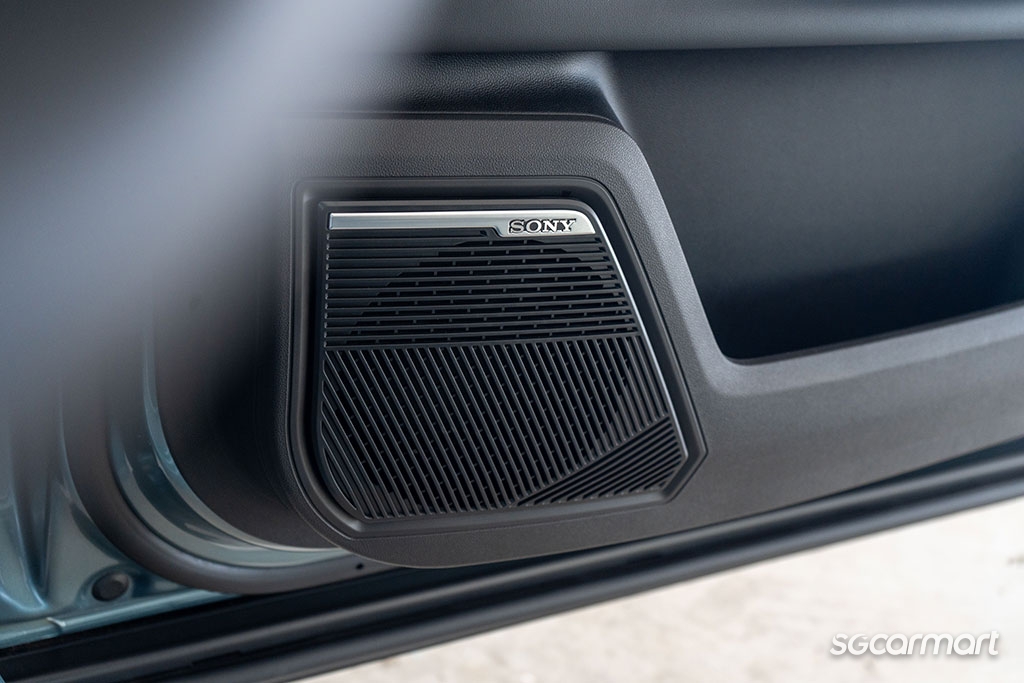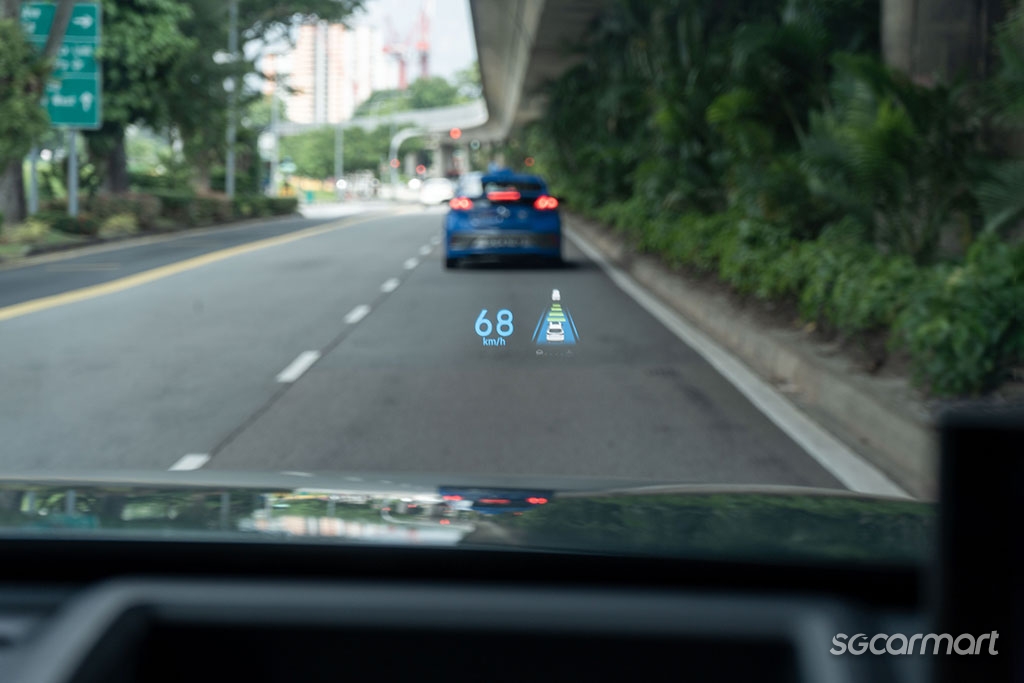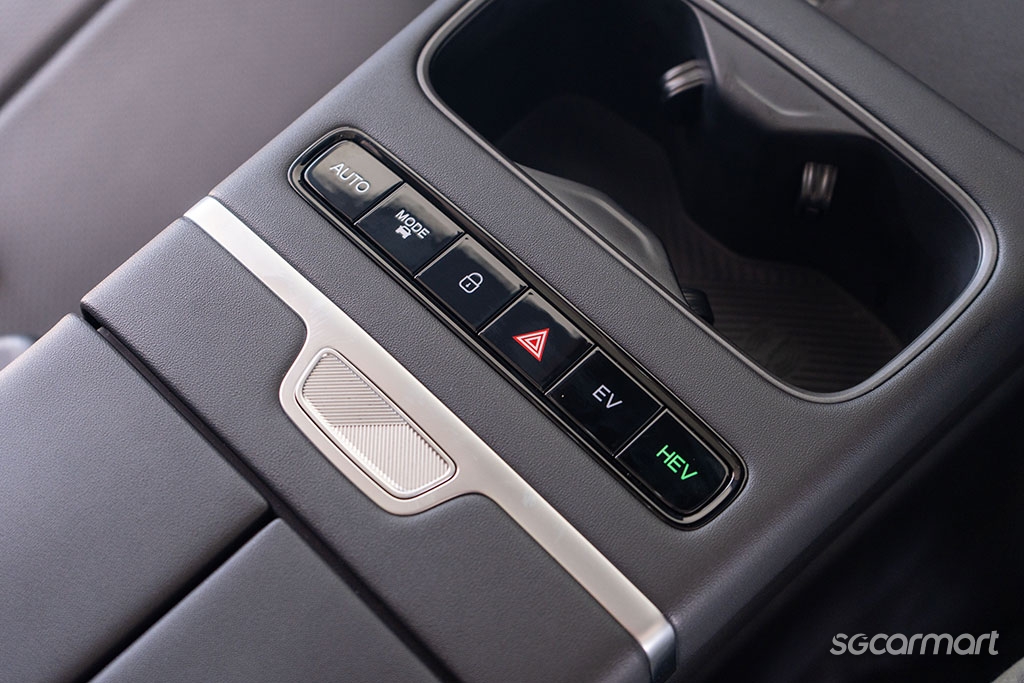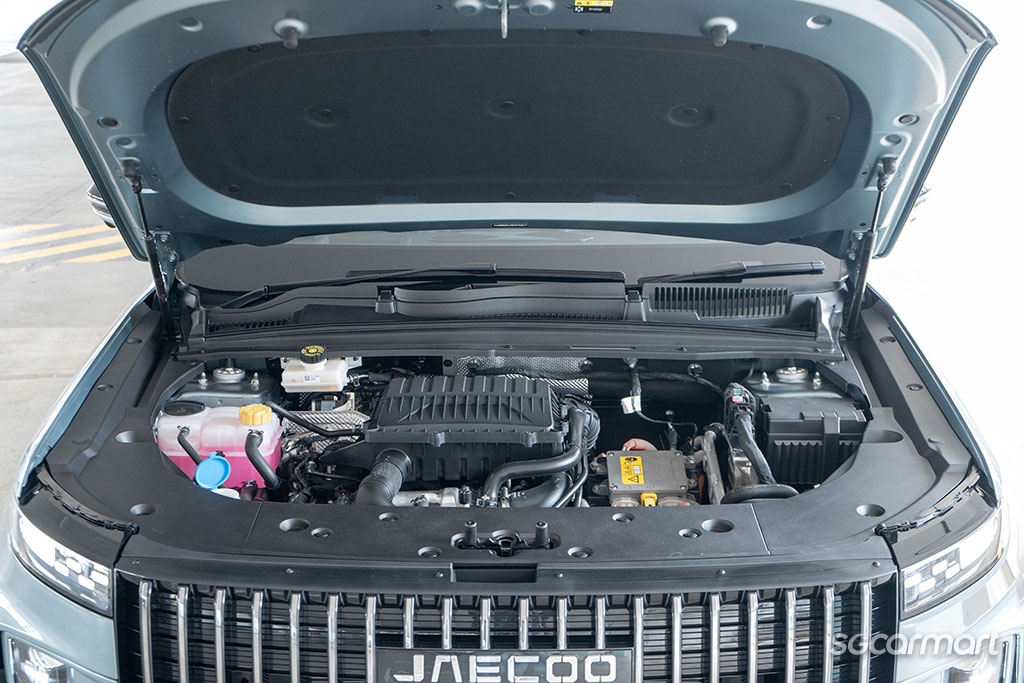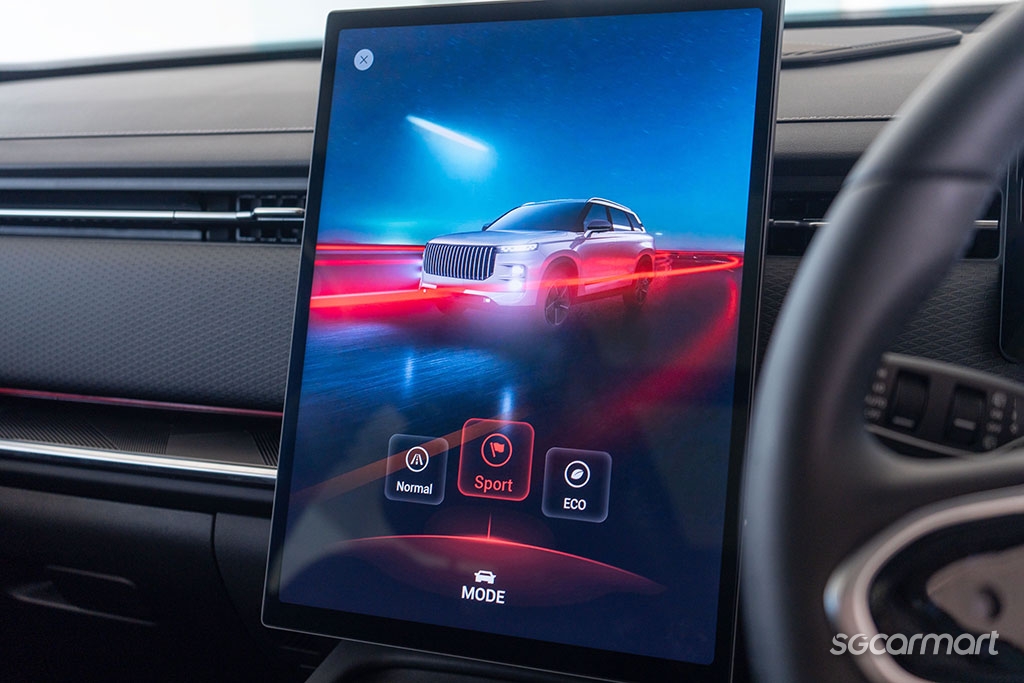Jaecoo J7 Plug-in Hybrid Review
28 Dec 2024|66,631 views
What We Like
Handsome styling
Generous equipment list
Commendable comfort and refinement levels
Drives and behaves for the most part like an EV
Excellent mileage (more than 1,100km in test conditions)
What We Dislike
Ride quality could use some improvement
Inconsistent brake pedal feel
Two is better than one, they say - the proverbial 'they' likely referring to Chery since its recent return to Singapore.
You've probably seen the sleek Omoda E5 a fair bit on our roads, but there are certainly drivers who have the palette for something a bit more rugged, and so, an all-new sub-brand by the name of Jaecoo has landed alongside too.
With the latter now introducing its first model - the J7 - here, the idiom applies all the more so to a quality that’s promising to make it stand out from the rest of the mid-sized SUV pack. Armed with a fuel tank cap on the left end, and charging flap on the right, it wants to properly offer the performance, smoothness and ease of an EV, but also the comfort and assurance of a combustion engine.
Styling: Fresh spin on an old playbook
Plug-in hybrids have thus far been the remit of more expensive brands on the market. In recent memory, Mercedes-Benz and Range Rover are first to come to mind - or for those with the pockets deep enough to savour something even more, indeed the likes of high-luxury, high-performance brands like Ferrari, Lamborghini and McLaren.
Estimated to be landing soon with a $210,000-ish price tag (inclusive of COE), however, the Jaecoo J7 has quite a different goal in mind: Of bringing the best of both worlds to a larger crowd. An 18.3kWh battery gives the car the ability to run completely silent and emission-free for up to 90km - but the presence too of a 1.5-litre turbocharged engine, a 60-litre fuel tank and a clever hybrid transmission, means the J7 claims a combined mileage of close to 1,200km when fully charged and fully refilled.
The J7 should have no problems turning heads - and winning buyers over - with its unabashedly brawny styling
Those are interesting promises - but require a longer timeline to be appreciated - so it's good that even on a more immediate and superficial level, this is the sort of car that effortlessly calls out for your attention on the road or at the showroom. Whereas other SUVs are happy to disguise their heft with softer lines, the J7 is all boxiness and brawn; its silhouette calling to mind most immediately earlier iterations of the Range Rover (or the Toyota Land Cruiser).
Like OMODA, it's interesting that JAECOO has chosen to do away with a new symbol for its badge, and instead deferred to just a simple spelling out as its brand logo - but then that also eliminates the need amongst unknowing lookers for a reverse Google-image search, as they scramble to figure this new car out. At the rear and up front, it helps that the J7 wants to declare its identity so eagerly in chrome, and in capital letters.
Extra flavour is added to the standard rugged-SUV styling playbook courtesy of these pixel-like elements all over the car
That's not to say the J7 feels derivative, though.
With their alternating rectangular light signatures, those head lights do the heavy-lifting for the car's sparkling, new-age outlook (you'll note the same visual lining the bottom of the car's doors). Likewise, the single light bar at the rear may have run the risk of anonymity, but those elongated pixels once more pull the car back into interesting visual territory. In all, it's a bold and cohesive design vision that should have no issues swaying buyers over.
The J7's cabin takes a similar tack of building first on an unsurprising and approachable template, before piling on little bits that add extra sparkle the closer you look.
Instead of wowing occupants with bursts of colour, 'understated' and 'cool' are the first terms to come to mind, with the preference here for a darker aesthetic.
There's some clever interior design at play to make the cabin feel slightly more expensive: Look at the geometric lines, for instance, that cover what would otherwise be plain plasticky surfaces in the car, or the starry patterns to the left of the infotainment screen. Arguably the most visually pleasing, however, are the vertical air vents that frame the dashboard - the nice muscular sort you expect on an SUV.
Despite the cabin's darker aesthetic, your eyes should be kept entertained by the mixture of geometric and interesting textures inside the car
It's a good thing that the rest of the car feels so subdued, so that the mind can take the time to process the full expanse of the J7's infotainment system. Considering both the time of its debut and also its Chinese roots, it's no surprise that the setup here is screen-heavy - with a massive tablet-like 14.8-inch touchscreen dominating the dash, and a 10.2-inch display functioning as the instrument cluster.
What's commendable, though, is the fact that diving into both doesn't require the mind of a coding whizz-kid. The tile-based menu on the former is easy to wrap one's head around, and the entire user experience is elevated by how sharp and snappy the screen is.
Graphics on the 14.5-inch infotainment touchscreen are vibrant and snappy, while the presence of a voice assistant helps quite considerably (and reliably) with basic functions such as adjusting the air-conditioning
Those who remain fans of physical controls for basic functions may be disappointed initially, but like other recent Chinese cars, the J7's counter-proposition is a decently reliable voice-control assistant, which can be activated with a friendly "Hello Jaecoo!". That should ensure that you can keep your hands on the wheel and eyes on the road while trying to turn the fan speed down on a cold and wet evening.
The J7 also excels in the one aspect that is arguably most crucial to an SUV: Space.
The J7's width, flat roofline, and flat floor give passengers plenty of space in the rear, while the sense of airiness can be heightened further by a large sunroof
Up front, the elimination of a traditional gear lever frees up extra space, while the floating centre console is spacious enough for tucking a small bag in. The rear bench will easily accommodate three, given the car's flat roofline, flat floor and sizeable width - and the sense of space is furthermore elevated by the standard offering of a dual-pane sunroof.
The sole questionable and confounding element here? Only one rear air vent (rather than the standard two) is on offer. Thankfully, the frostiness of air-conditioning up front should ensure even warmer days won't punish all who get on board for too long.
The J7’s 500-litre boot is also great for its size, while the storage spaces around are commendable for their range, if not for their sheer volume. As a small special treat, there's even a little hook on the front passenger's side - perfect for hanging some takeaway on days when no one is available as your dinner mate.
The car's standard equipment list is generous, including this banging eight-speaker Sony system, and ventilated seats up front
And like its sister, the OMODA E5, the JAECOO 7 excels in its equipment list.
Between more upbeat K-Pop playlists and more morose mandopop ballads, that eight-speaker Sony system works its magic equally well, while other more upmarket touches include a crisp head-up display, wireless Apple Carplay and Android Auto, and a full suite of advanced driving assistance features. This is a modern Chinese car, too, so of course seat ventilation are provided for both the driver and shotgun passenger.
The drive: EV-like ease and power, ICE car-like assurance
The very process of starting the J7 up already hints that something special lies underneath, because… there isn't actually any need to start the car up.
At least not in the traditional sense. As with many electric cars on the market, simply settle into the weight-sensing driver's seat, buckle up and hit the brakes, then flick the steering-wheel mounted gear stalk into 'D'. And off you go.
This EV-esqueness pervades the rest of the driving experience. The J7 may have a turbocharged engine under the hood - and this is indeed a crucial piece for the way it drives - but it's also keen on letting its electric motor do most of the talking (or whispering). From a standstill, it is the hushed instancy of torque that will first strike a driver - and depending on how much juice is left in the car's battery, that silence can continue into rather high speeds too, especially if you've punched it into EV mode.
The untrained ear might not even realise it when the engine (inevitably) takes over; it's just a soft hum that shyly peeks its head in, clearly disinterested in making its presence felt, accompanied by the slightest vibration felt through the steering wheel.
Unlike other plug-in hybrids we've driven that are happy to let their batteries run close to 0%, the J7 shines because it's so focused on weaponising its electrification. By default, the minimum we saw the car's battery descend to was to around 11-12%. Either the engine or the car's regenerative braking system would then bring this number up to around 15-16%, before things fell back toward the lower limit again.
And as a result, the J7's levels of on-road refinement are fantastic. Even at higher speeds, the relative absence of any transmission drone, coupled with its well-insulated cabin, means drives are mostly quiet and relaxing.
The one-two punch of its electric motor and engine also means that the J7 has plenty of power to give. (In fact, its performance-SUV-rivalling power: An impressive system output of 342bhp and 525Nm of torque.) Serendipitously, the point at which most family EVs run out of steam (or electrons) is the exact moment at which the J7’s engine takes over, allowing the J7 to never feel out of breath.
It's a small shame given the magic of its powertrain, however, that there are portions to the J7's drive that lack some polish.
No one will deny its levels of comfort and refinement for its price point, but one does wonder whether more effort could have gone into improving its ride quality, which can feel slightly brittle. Its brakes, which don't provide much feel in the initial portion of travel before seeming to clamp down suddenly, are another slight weakness. Thankfully, the latter can be mitigated slightly with adjustments via the infotainment menu.
And in all, the J7 makes for a thoroughly convincing package when one returns to its calling card: Range. Your exact fuel consumption figure is likely to differ based on how much (or frequently) you're willing to charge that battery, but the car delivers faithfully on its 1,100km-eclipsing mileage. Forget mere cross-border road trips; even a single push up to Hat Yai should be completed with ease.
Standing out by pulling from multiple worlds
One gets the sense that the J7's ability to stand out - in spite of entering arguably the most crowded segment - lies precisely in its willingness to inhabit more than one space.
It has all the comfort, equipment and approachability of the most well-loved family cars, but offers the sort of rough-hewn image that should appeal to those with a more adventurous outlook. Unlike more conventional hybrids, it delivers thoroughly on all the rapidness and refinement of an EV - but counters that you don't need to bow entirely to the lifestyle shift that comes with living one.
Proverbs must be approached with caution for their tendency to generalise - but in the J7's case, there's no question then that two is truly better one.
Here are a few other cars that may interest you!
What We Like
Handsome styling
Generous equipment list
Commendable comfort and refinement levels
Drives and behaves for the most part like an EV
Excellent mileage (more than 1,100km in test conditions)
What We Dislike
Ride quality could use some improvement
Inconsistent brake pedal feel
Two is better than one, they say - the proverbial 'they' likely referring to Chery since its recent return to Singapore.
You've probably seen the sleek Omoda E5 a fair bit on our roads, but there are certainly drivers who have the palette for something a bit more rugged, and so, an all-new sub-brand by the name of Jaecoo has landed alongside too.
With the latter now introducing its first model - the J7 - here, the idiom applies all the more so to a quality that’s promising to make it stand out from the rest of the mid-sized SUV pack. Armed with a fuel tank cap on the left end, and charging flap on the right, it wants to properly offer the performance, smoothness and ease of an EV, but also the comfort and assurance of a combustion engine.
Styling: Fresh spin on an old playbook
Plug-in hybrids have thus far been the remit of more expensive brands on the market. In recent memory, Mercedes-Benz and Range Rover are first to come to mind - or for those with the pockets deep enough to savour something even more, indeed the likes of high-luxury, high-performance brands like Ferrari, Lamborghini and McLaren.
Estimated to be landing soon with a $210,000-ish price tag (inclusive of COE), however, the Jaecoo J7 has quite a different goal in mind: Of bringing the best of both worlds to a larger crowd. An 18.3kWh battery gives the car the ability to run completely silent and emission-free for up to 90km - but the presence too of a 1.5-litre turbocharged engine, a 60-litre fuel tank and a clever hybrid transmission, means the J7 claims a combined mileage of close to 1,200km when fully charged and fully refilled.
The J7 should have no problems turning heads - and winning buyers over - with its unabashedly brawny styling
Those are interesting promises - but require a longer timeline to be appreciated - so it's good that even on a more immediate and superficial level, this is the sort of car that effortlessly calls out for your attention on the road or at the showroom. Whereas other SUVs are happy to disguise their heft with softer lines, the J7 is all boxiness and brawn; its silhouette calling to mind most immediately earlier iterations of the Range Rover (or the Toyota Land Cruiser).
Like OMODA, it's interesting that JAECOO has chosen to do away with a new symbol for its badge, and instead deferred to just a simple spelling out as its brand logo - but then that also eliminates the need amongst unknowing lookers for a reverse Google-image search, as they scramble to figure this new car out. At the rear and up front, it helps that the J7 wants to declare its identity so eagerly in chrome, and in capital letters.
Extra flavour is added to the standard rugged-SUV styling playbook courtesy of these pixel-like elements all over the car
That's not to say the J7 feels derivative, though.
With their alternating rectangular light signatures, those head lights do the heavy-lifting for the car's sparkling, new-age outlook (you'll note the same visual lining the bottom of the car's doors). Likewise, the single light bar at the rear may have run the risk of anonymity, but those elongated pixels once more pull the car back into interesting visual territory. In all, it's a bold and cohesive design vision that should have no issues swaying buyers over.
The J7's cabin takes a similar tack of building first on an unsurprising and approachable template, before piling on little bits that add extra sparkle the closer you look.
Instead of wowing occupants with bursts of colour, 'understated' and 'cool' are the first terms to come to mind, with the preference here for a darker aesthetic.
There's some clever interior design at play to make the cabin feel slightly more expensive: Look at the geometric lines, for instance, that cover what would otherwise be plain plasticky surfaces in the car, or the starry patterns to the left of the infotainment screen. Arguably the most visually pleasing, however, are the vertical air vents that frame the dashboard - the nice muscular sort you expect on an SUV.
Despite the cabin's darker aesthetic, your eyes should be kept entertained by the mixture of geometric and interesting textures inside the car
It's a good thing that the rest of the car feels so subdued, so that the mind can take the time to process the full expanse of the J7's infotainment system. Considering both the time of its debut and also its Chinese roots, it's no surprise that the setup here is screen-heavy - with a massive tablet-like 14.8-inch touchscreen dominating the dash, and a 10.2-inch display functioning as the instrument cluster.
What's commendable, though, is the fact that diving into both doesn't require the mind of a coding whizz-kid. The tile-based menu on the former is easy to wrap one's head around, and the entire user experience is elevated by how sharp and snappy the screen is.
Graphics on the 14.5-inch infotainment touchscreen are vibrant and snappy, while the presence of a voice assistant helps quite considerably (and reliably) with basic functions such as adjusting the air-conditioning
Those who remain fans of physical controls for basic functions may be disappointed initially, but like other recent Chinese cars, the J7's counter-proposition is a decently reliable voice-control assistant, which can be activated with a friendly "Hello Jaecoo!". That should ensure that you can keep your hands on the wheel and eyes on the road while trying to turn the fan speed down on a cold and wet evening.
The J7 also excels in the one aspect that is arguably most crucial to an SUV: Space.
The J7's width, flat roofline, and flat floor give passengers plenty of space in the rear, while the sense of airiness can be heightened further by a large sunroof
Up front, the elimination of a traditional gear lever frees up extra space, while the floating centre console is spacious enough for tucking a small bag in. The rear bench will easily accommodate three, given the car's flat roofline, flat floor and sizeable width - and the sense of space is furthermore elevated by the standard offering of a dual-pane sunroof.
The sole questionable and confounding element here? Only one rear air vent (rather than the standard two) is on offer. Thankfully, the frostiness of air-conditioning up front should ensure even warmer days won't punish all who get on board for too long.
The J7’s 500-litre boot is also great for its size, while the storage spaces around are commendable for their range, if not for their sheer volume. As a small special treat, there's even a little hook on the front passenger's side - perfect for hanging some takeaway on days when no one is available as your dinner mate.
The car's standard equipment list is generous, including this banging eight-speaker Sony system, and ventilated seats up front
And like its sister, the OMODA E5, the JAECOO 7 excels in its equipment list.
Between more upbeat K-Pop playlists and more morose mandopop ballads, that eight-speaker Sony system works its magic equally well, while other more upmarket touches include a crisp head-up display, wireless Apple Carplay and Android Auto, and a full suite of advanced driving assistance features. This is a modern Chinese car, too, so of course seat ventilation are provided for both the driver and shotgun passenger.
The drive: EV-like ease and power, ICE car-like assurance
The very process of starting the J7 up already hints that something special lies underneath, because… there isn't actually any need to start the car up.
At least not in the traditional sense. As with many electric cars on the market, simply settle into the weight-sensing driver's seat, buckle up and hit the brakes, then flick the steering-wheel mounted gear stalk into 'D'. And off you go.
This EV-esqueness pervades the rest of the driving experience. The J7 may have a turbocharged engine under the hood - and this is indeed a crucial piece for the way it drives - but it's also keen on letting its electric motor do most of the talking (or whispering). From a standstill, it is the hushed instancy of torque that will first strike a driver - and depending on how much juice is left in the car's battery, that silence can continue into rather high speeds too, especially if you've punched it into EV mode.
The untrained ear might not even realise it when the engine (inevitably) takes over; it's just a soft hum that shyly peeks its head in, clearly disinterested in making its presence felt, accompanied by the slightest vibration felt through the steering wheel.
Unlike other plug-in hybrids we've driven that are happy to let their batteries run close to 0%, the J7 shines because it's so focused on weaponising its electrification. By default, the minimum we saw the car's battery descend to was to around 11-12%. Either the engine or the car's regenerative braking system would then bring this number up to around 15-16%, before things fell back toward the lower limit again.
And as a result, the J7's levels of on-road refinement are fantastic. Even at higher speeds, the relative absence of any transmission drone, coupled with its well-insulated cabin, means drives are mostly quiet and relaxing.
The one-two punch of its electric motor and engine also means that the J7 has plenty of power to give. (In fact, its performance-SUV-rivalling power: An impressive system output of 342bhp and 525Nm of torque.) Serendipitously, the point at which most family EVs run out of steam (or electrons) is the exact moment at which the J7’s engine takes over, allowing the J7 to never feel out of breath.
It's a small shame given the magic of its powertrain, however, that there are portions to the J7's drive that lack some polish.
No one will deny its levels of comfort and refinement for its price point, but one does wonder whether more effort could have gone into improving its ride quality, which can feel slightly brittle. Its brakes, which don't provide much feel in the initial portion of travel before seeming to clamp down suddenly, are another slight weakness. Thankfully, the latter can be mitigated slightly with adjustments via the infotainment menu.
And in all, the J7 makes for a thoroughly convincing package when one returns to its calling card: Range. Your exact fuel consumption figure is likely to differ based on how much (or frequently) you're willing to charge that battery, but the car delivers faithfully on its 1,100km-eclipsing mileage. Forget mere cross-border road trips; even a single push up to Hat Yai should be completed with ease.
Standing out by pulling from multiple worlds
One gets the sense that the J7's ability to stand out - in spite of entering arguably the most crowded segment - lies precisely in its willingness to inhabit more than one space.
It has all the comfort, equipment and approachability of the most well-loved family cars, but offers the sort of rough-hewn image that should appeal to those with a more adventurous outlook. Unlike more conventional hybrids, it delivers thoroughly on all the rapidness and refinement of an EV - but counters that you don't need to bow entirely to the lifestyle shift that comes with living one.
Proverbs must be approached with caution for their tendency to generalise - but in the J7's case, there's no question then that two is truly better one.
Here are a few other cars that may interest you!
Car Information
Jaecoo 7 Plug-in Hybrid 1.5 (A)
$214,999
CAT B|Petrol-Electric|142.9km/L
Horsepower
150kW (201 bhp)
Torque
525 Nm
Acceleration
8.5sec (0-100km /hr)
Promotion
Experience luxury, power, and cutting-edge tech with the Jaecoo 7 and enjoy up to $45,000 in promotion & savings.
Read moreThank You For Your Subscription.
- Exterior
- Interior
- The Drive
- Conclusion























































































